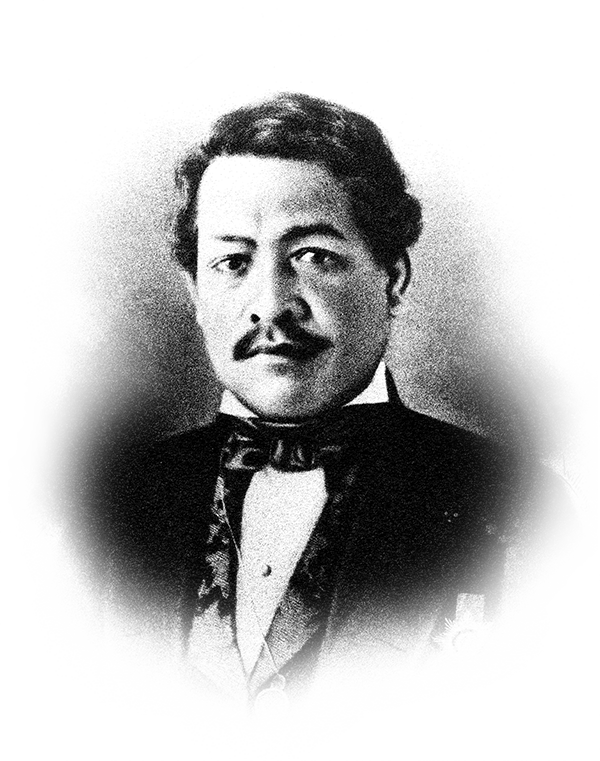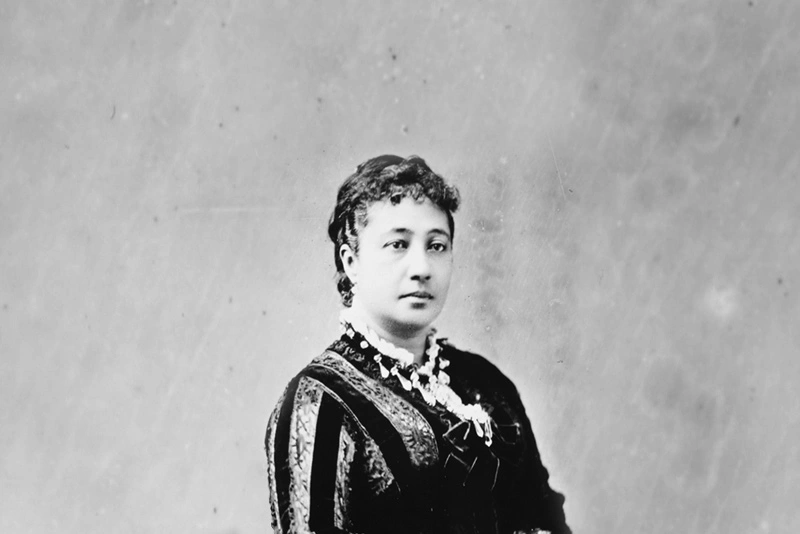About Kauikeaouli

Photo courtesy of Bishop Museum Archives
King Kamehameha III, born Kauikeaouli Kaleiopapa Kuakamanolani Mahinalani Kalaninuiwaiakua Keaweawe‘ulaokalani, was the longest reigning Hawaiian monarch. [other names: Keaweawe‘ula Kīwala‘ō Kauikeaouli Kaleiopapa Kalani Waiakua Kalanikau Iokikilo Kīwala‘ō i ke kapu Kamehameha]
Under his rule the Hawaiian Kingdom received its first Constitution in 1840.
The 1840 Constitution of the Kingdom of Hawai‘i titled "Ke Kumukānāwai a me nā Kānāwai o ko Hawai‘i Pae ‘Āina, Honolulu, 1840" was the first fully written constitution for the Kingdom of Hawai‘i.
The constitution, compared to its predecessor, was extremely detailed. The June 7, 1839 document, sometimes called a constitution but more similar to a declaration of rights, stated simply that the government was based on Christian values and equality for all. Incorporating the 1839 document, the 1840 Constitution of the Kingdom of Hawai‘i was a turning point in Hawai‘i government.
This constitution organized the power of government and its functions by defining the House of Representatives as the legislative body, giving their people the power to vote, proclaiming the House of Kamehameha, establishing of the office of Kuhina Nui, creating of the office of royal governors of the various islands and recognizing Christianity as an authority.
In the same year of 1840, Kauikeaouli established the Chief’s Children’s School to groom Hawai‘i’s next generation of ali‘i. Also in 1840, Hawai‘i’s public school system is established by Kamehameha III. This is thirty years before Government-financed education became available in England in 1870 and forty years before the creation of the l‘ecole republicaine (Republican School) in 1880 where public instruction becomes mandatory for all children under the age of 15 in France.
One of the most memorialized days in King Kamehameha III’s reign took place on July 31, 1843 when British Admiral Thomas officially restored the Hawaiian Kingdom to Kamehameha III after the illegal cession of the islands by British Captain Paulet.
At a 10:00 a.m. ceremony, the Union Jack was lowered and the Hawaiian flag was raised. This historic ceremony took place in the area known today as Thomas Square, in Honolulu, Hawai‘i. On the same day, addressing his people on the front stairs of Kawaiaha‘o Church, Kamehameha III spoke the words that would become the State’s motto:
"Ua mau ka ea o ka ‘āina i ka pono.”
“The life (sovereignty) of the land is perpetuated in righteousness”; “The sovereignty of the land is preserved through justice”
This day, July 31, will be celebrated as a National holiday in the Hawaiian Kingdom known as Ka Lā Ho‘iho‘ï Ea, Restoration Day.
After Admiral Thomas restored the Hawaiian Kingdom to Kamehameha III, on July 31, 1843, the Hawaiian delegation sent previously by the King to acquire treaties that recognized Hawai‘i’s independence with other foreign powers continued their stay in Europe to witness a treaty signing between Britain and France that recognized the sovereignty of the Hawaiian Kingdom. The day the treaty was signed, November 28, 1843, became a Hawaiian national holiday known a Lā Ku‘oko‘a – Independence Day.
During the 1840s, the Kingdom of Hawai‘i faced multiple threats to its sovereignty by foreign powers, prompting King Kamehameha III, Kauikeaouli, to seek out ways that might protect Hawai‘i’s interests from external challenges and that would, internally, promote economic stability and development.
Another momentous undertaking which happened during his tenure as Sovereign was the enactment of the 1848 Mahele Land Act (Great Mahele) that would forever change the land tenure system in Hawai‘i by redistributing lands between the government, king, nobles, and commoners and allowing foreigners to own land fee simple in Hawai‘i for the first time.
The original plan of land distributions was to be divided in equal 1/3 parts between the Mō‘ī, the ali‘i, and the maka‘ainana. Instead, the maka‘ainana received much less than the intended allocation of land. The land conveyed unto the Mō‘ī were further divided into two categories, 1) Government lands and 2) Crown Lands. The Mō‘ī managed these latter lands personally, transferring some, acquiring others, mortgaging some, and raising revenues for them.
Also during his reign, King Kamehameha III along with Alexander Cartwright founded the Honolulu Fire Department on December 27, 1850.
His successor, Kamehameha IV, Alexander Liholiho, described his reign in his January 11, 1855 speech as:
“The age of Kamehameha III was that of progress and of liberty—of schools and of civilization. He gave us a Constitution and fixed laws; he secured the people in the title to their lands, and removed the last chain of oppression. He gave them a voice in his councils and in the making of the laws by which they are governed. He was a great national benefactor, and has left the impress of his mild and amiable disposition on the age for which he was born.”












